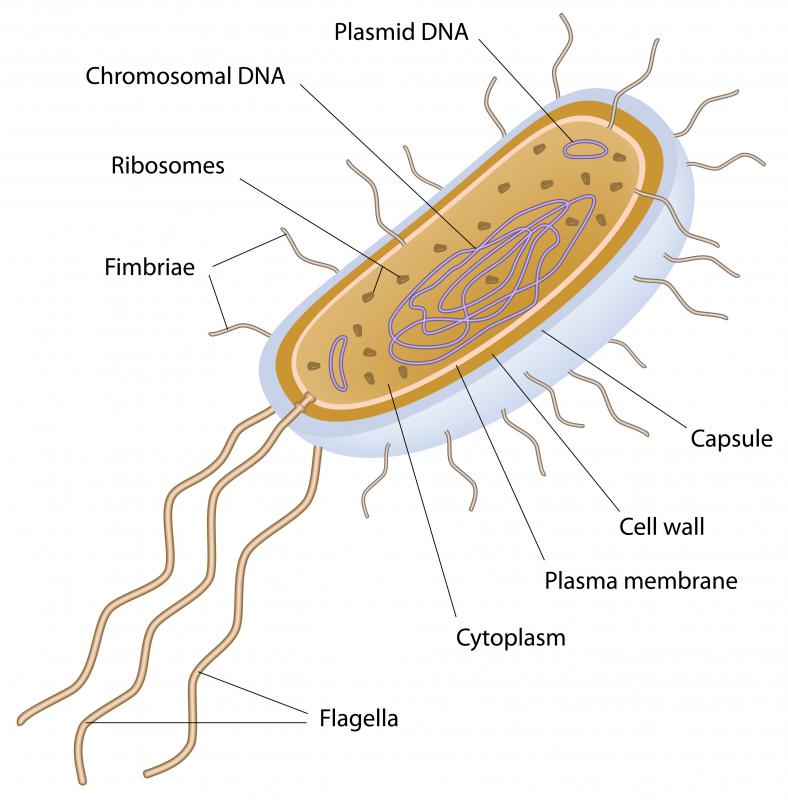At WiseGEEK, we're committed to delivering accurate, trustworthy information. Our expert-authored content is rigorously fact-checked and sourced from credible authorities. Discover how we uphold the highest standards in providing you with reliable knowledge.
What Is Euchromatin?
Euchromatin is a substance composed of DNA and protein molecules that makes up the bulk of material within a mammalian cell nucleus. It is one particular type of chromatin that is distinguished from heterochromatin both by its function and location. Heterochromatin is a tightly-packed region of chromatin usually found on the ends of centromeres, a central region of a chromosome where the chromatids cross to form an X-shape, or at the ends of telomeres which protect the ends of chromosomes from genetic degradation. Gene expression or transcription is largely carried out by euchromatin, which is less dense than heterochromatin. This means that euchromatin is often partially or fully uncoiled, which leads to it staining lightly in laboratory examinations of genetic material.
The euchromatin nucleus is considered the most biologically active region of the nucleus within the cell. Within this region, euchromatin is responsible for genome expression of all chromosomes through the synthesis of both messenger RNA production and DNA gene expression. Every type of tissue that is produced by the human body from that which builds up its various organs to blood and other cellular components is believed to originate in the euchromatic genome. This includes basic functions of the body as well, such as the maintenance of the immune system and generation of hormones. Medical science believes that, by studying euchromatic sequence behavior, treatments for genetic diseases or deficiencies can be developed.

While the euchromatic nucleus is common in higher animal forms, prokaryote organisms such as bacteria and archaea which contain no nuclei for their cell structures also contain a form of euchromatin. Prokaryotes are known to lack heterochromatin in fact. This may be due to heterochromatin's function, which is believed to primarily serve a protective role for genes in higher organisms at its central and anterior locations along the chromosome.

The period during which euchromatin is genetically active is referred to as interphase, which is the segment of a cell's life cycle when it is not actively engaged in cell division, and is sometimes referred to as interkinesis. This is a phase that generally occurs midway between mitotic, or standard, cell division and meiotic division, where two cell divisions result in a diploid chromosome splitting to become haploids, or single sets of chromosomes. During the interphase period, euchromatin is made up of a material that looks like a dispersal of fine uncoiled threads dispersed within the nucleus.
AS FEATURED ON:
AS FEATURED ON:













Discuss this Article
Post your comments